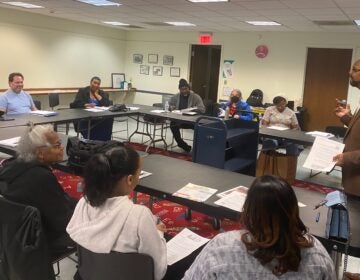Philadelphia Zoning Code should provide optimal protections for all waterways
Almost two months have passed since Philadelphia’s new zoning code took effect, but many of the City’s rivers and streams still have no legal protection.
The following is an essay submitted by Maura McCarthy, Executive Director of the Friends of the Wissahickon, and John Rollins, President of the Friends of the Wissahickon.
Almost two months have passed since Philadelphia’s new zoning code took effect, but many of the City’s rivers and streams still have no legal protection.
Changes to the new zoning code are still being debated in City Council – changes that would require only 25-foot buffers (or setbacks) from development for the city’s rivers and streams. This figure is drastically lower than both the 100-foot setback originally proposed during the zoning reform process and the 50-foot setback that was eventually agreed upon by waterway advocates, community representatives, the Planning Commission, and members of City Council.
All of Philadelphia’s waterways are considered impaired, according to the Pennsylvania Department of Environmental Protection. If any change is to be made to the minimum width of the buffer zone around Philadelphia’s waterways and streams, it should be restored to the original 100 feet, as recommended by the Department of Environmental Protection. Retaining the compromise 50-foot buffer is a minimally acceptable alternative; reducing it further to 25 feet would be devastating to the health of Philadelphia’s waterways.
This issue is of particular interest to organizations that work to maintain and protect Philadelphia’s watershed parks, such as the Friends of the Wissahickon. Our focus is on protecting and improving the public lands of the lower Wissahickon Valley and the quality of the Wissahickon Creek, which contributes to the drinking water for nearly one-third of Philadelphia.
Every day in the lower Wissahickon Valley, we see how buffer zones act as natural biofilters, protecting rivers and streams from the negative effects of sedimentation, stormwater runoff, and erosion.
In 1975, City Council recognized the importance of setbacks for our drinking water with a targeted ordinance that mandated a 200-foot setback for significant streams and tributaries and a 50-foot setback for minor tributaries in the Wissahickon Watershed. Should they consider a 25-foot buffer zone, Council will be ignoring what they know to be true: drinking water health requires significant setbacks for stream buffer zones.
There is strong evidence that a 25-foot buffer will not meet Philadelphia’s basic drinking water quality goals for sediment and nutrient reduction as mandated by the U.S. Environmental Protection Agency (EPA). The 1997 Chesapeake Bay Riparian Handbook, published by the United States Department of Agriculture and EPA, states that “. . . for a riparian area to serve the water quality functions of buffering impacts from adjacent land use, a ‘critical mass’ or sustainable width is often essential. Buffers of less than 50 feet have proven increasingly difficult to maintain as effective filters in the field. . . very narrow buffer strips of 15 to 25 feet are generally inadequate for sediment or nutrient reductions. . .”
Implementing an inadequate buffer zone could cost the City tens or even hundreds of millions of dollars to remedy, requiring expensive improvements to our drinking water infrastructure over a long period of time. In addition, failing to establish viable, working buffer zones in the City of Philadelphia also directly undermines the Philadelphia Water Department’s visionary Green Cities, Clean Water agreement with the EPA, a landmark strategy that is poised to distinguish Philadelphia from other major U.S. cities in the coming decades.
Although there is complexity in the drafting of all legislation, the overall health of the Wissahickon Creek and other Philadelphia watersheds is a critical issue for not only Northwest Philadelphia residents, but all Philadelphians reliant on the public water supply. The citizens of Philadelphia need to know that City Council will ensure that the protections put into place in the Wissahickon in the 1970s will be continued and strengthened into the future, and that similar protections will be extended to all streams in Philadelphia, regardless of the new zoning changes.
FOW seeks to maintain this existing standard in the Wissahickon Watershed and improve the standards City-wide and urges Council to strengthen Philadelphia’s health, infrastructure, quality of life, and future fiscal health by increasing setbacks for all Philadelphia waterways, rather than reducing and weakening our water quality protections. Significant stream buffers of 100 feet would provide optimal protections for all waterways. We urge all citizens in Philadelphia to contact their local Council representatives and speak up for optimal stream buffers.
WHYY is your source for fact-based, in-depth journalism and information. As a nonprofit organization, we rely on financial support from readers like you. Please give today.




